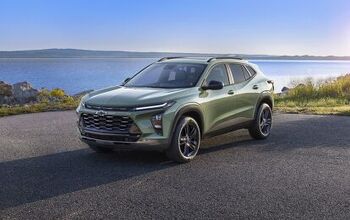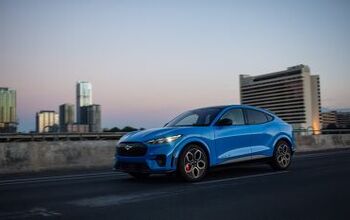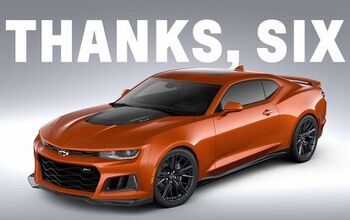EV Racing: Saved By Scalextric?
Between Nissan’s Leaf racer and a new EV-only racing cup, electric auto racing has been coming along in recent months, although significant challenges remain. For one thing, batteries are still extremely heavy, and for another, they take a long time to recharge. Finally, thermal management issues conspire with both of these battery challenges to force EV races to be quite short. And in search of a solution, one team that’s entered into the EV Cup is looking to the original EV racers for inspiration: slot cars. Rather than getting hot and heavy with big batteries, figures Drayson Racing Technologies, why not charge the car as it’s racing at speeds upwards of 200 MPH? Luckily HaloIPT has come aboard the project, bringing its eponymous wireless Inductive Power Transfer technology to bear in order to create life-sized, wireless, slot-free slot cars.
More by Edward Niedermeyer

































Comments
Join the conversation
EV motorcycle racing however is both real and progressed massively in just the last year. Last year at Laguna, the best EV motorcycle was 1:45. This year, it was 1:31 in qualifying. And Steve Rapp, the rider, walked away with a victory, involving a warm-up lap, 8 race laps, and a victory lap... The same rider lapped his BMW superbike at 1:27 in suprebike qualifying. The MotoGP bikes: the best bikes in the world with the best riders were only 1:21... At the rate they are going, 5 years from now, the EVs will be faster than the MotoGP bikes! The biggest limit is they are still sprint races: 8 laps vs the 28 for a Superbike race.
It seems like swappable battery packs would be a much better analogue to IC racing than continuous inductive charging. Pull into the pit and swap packs, tires, etc. just like the pit stops made by IC race cars. A big part of the value of auto racing is real-world evaluation of cutting edge technology that trickles down to consumer products, and adding inductive charging to enough roadways to make it the answer to EV range issues is wildly impractical. Using racing to push the envelope on battery capacity, swapping and charging, as well as electric drive train efficiency could yield significant advances in EVs for general use.
Green racing. Just when I thought the ecodorks couldn't find another niche to utterly ruin with their fetish for forcing their joyless politically correct fantasies into every opening in sight, somebody came up with this.
The problem with inductive charging is the distance between the coils in the car and the coils in the road surface. The flux density across an air gap varies with distance, and the 4 to 8 inches from the road to the underside of a car is an extremely large distance for inductive anything.